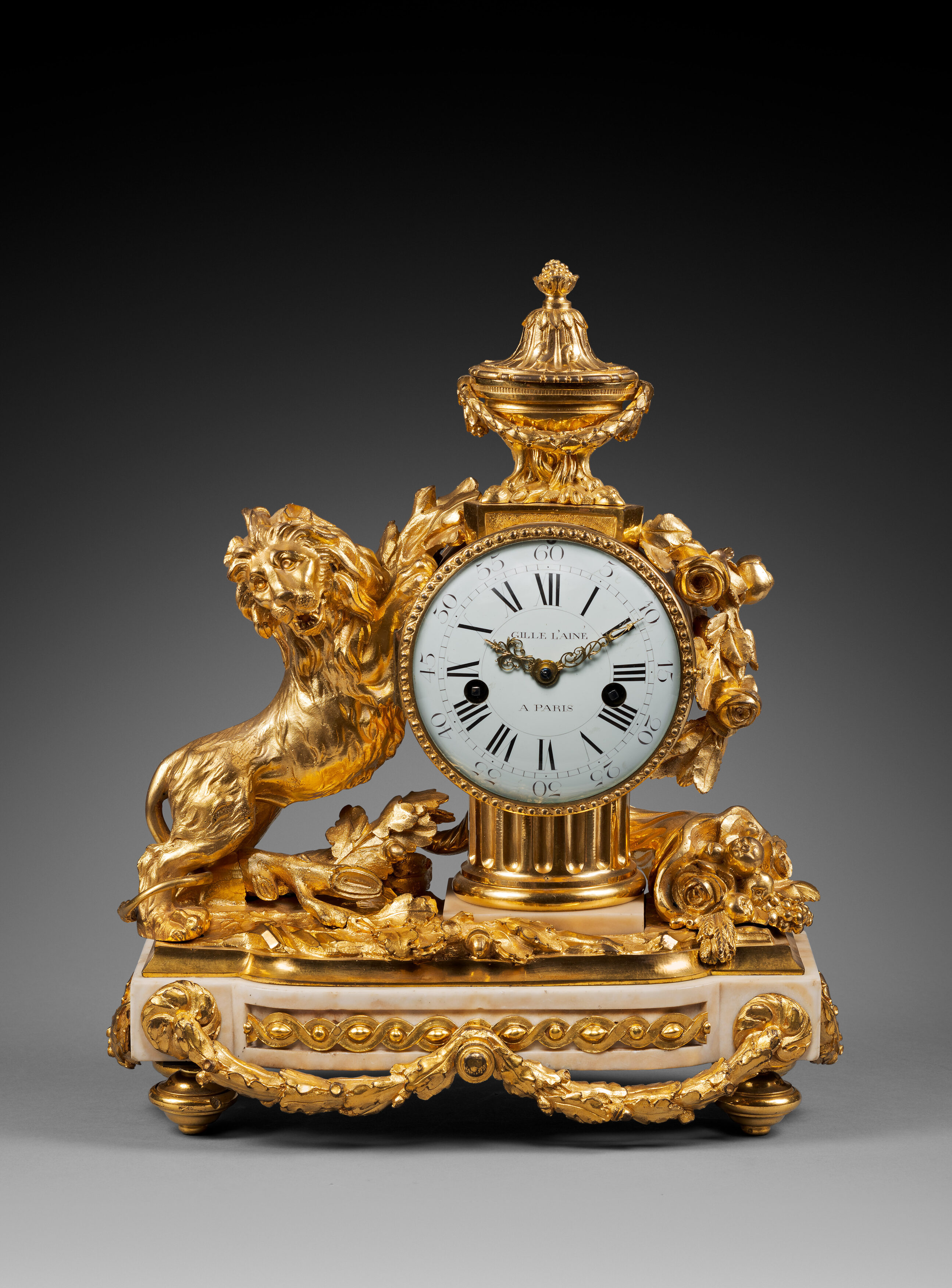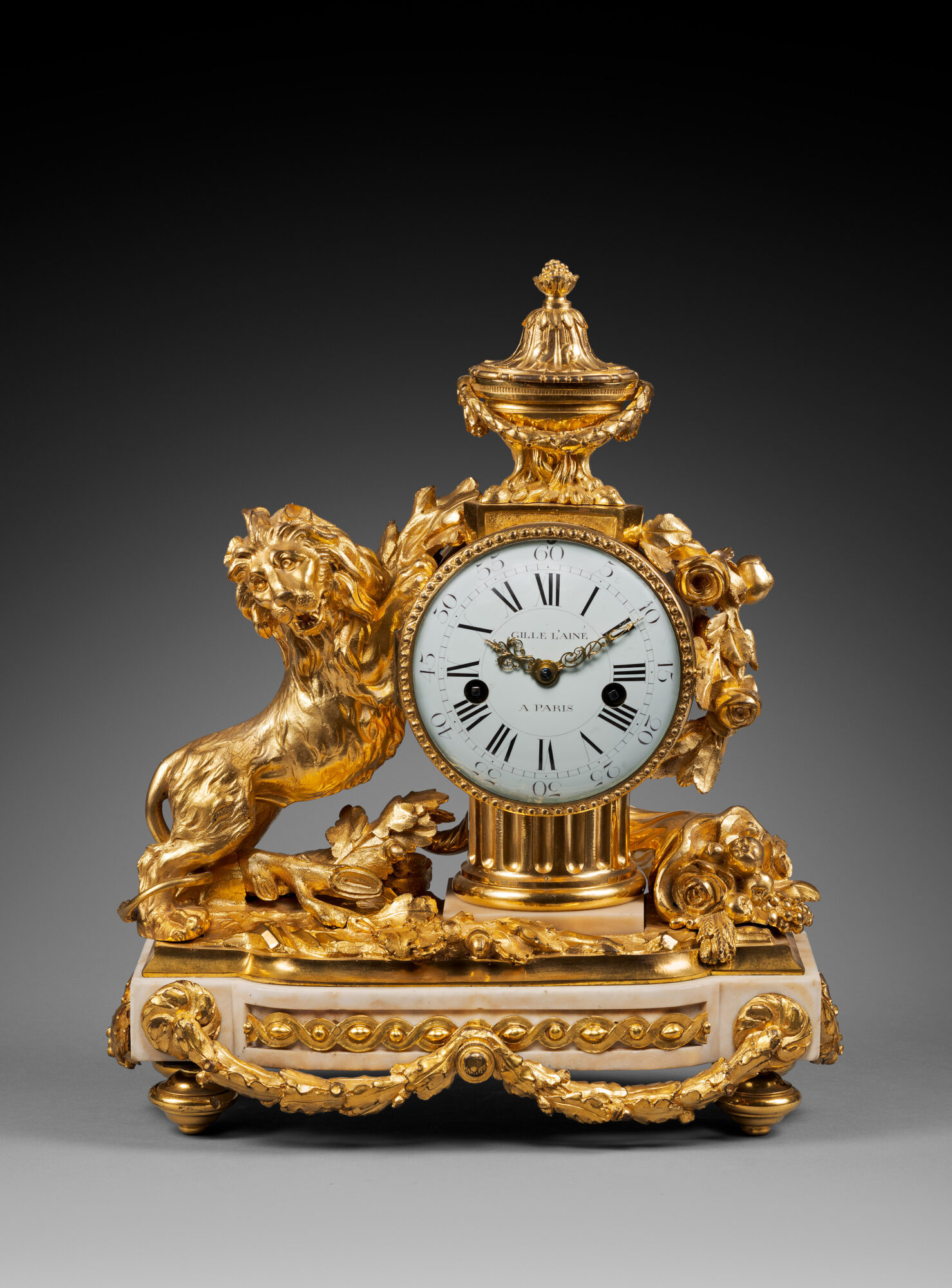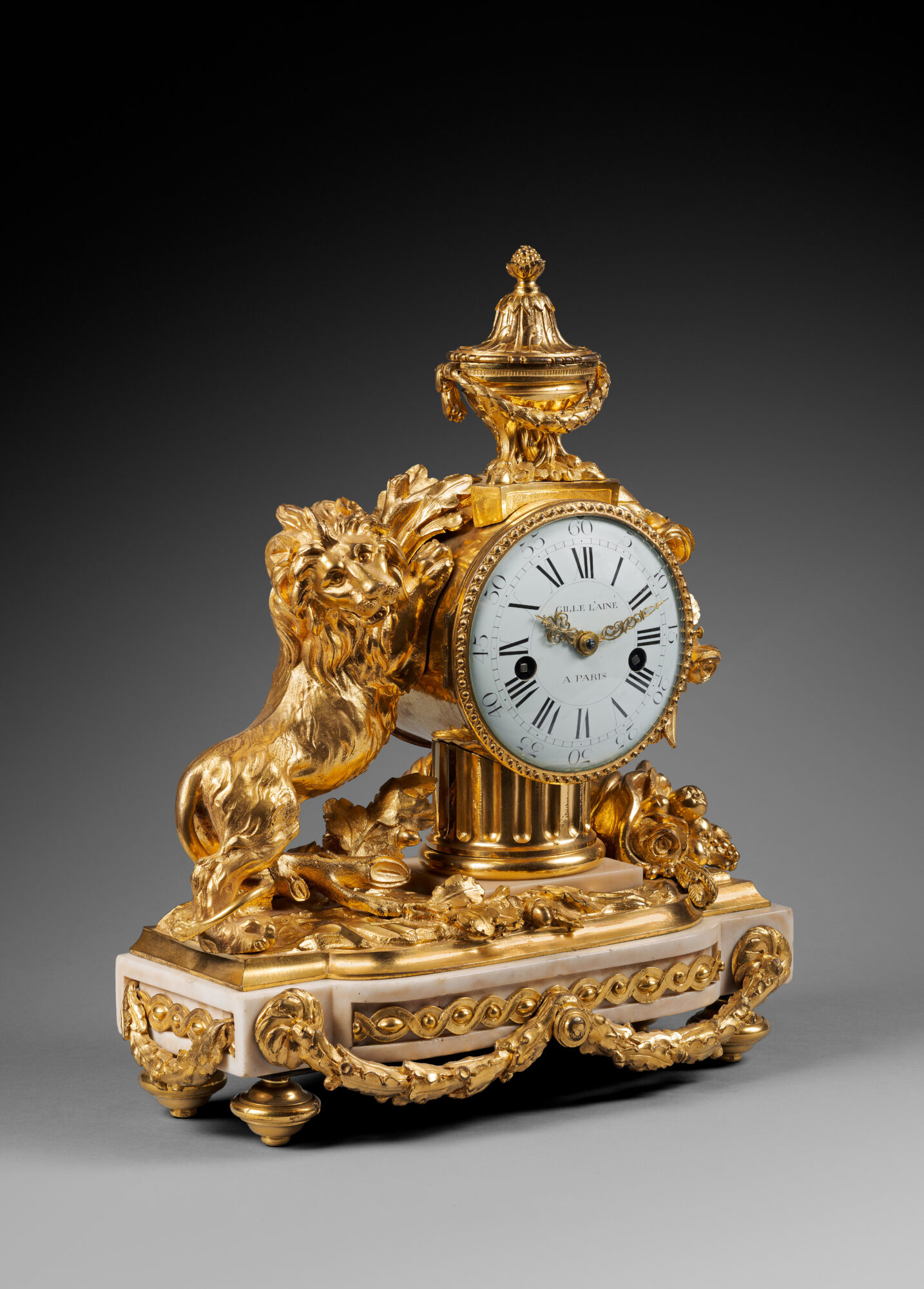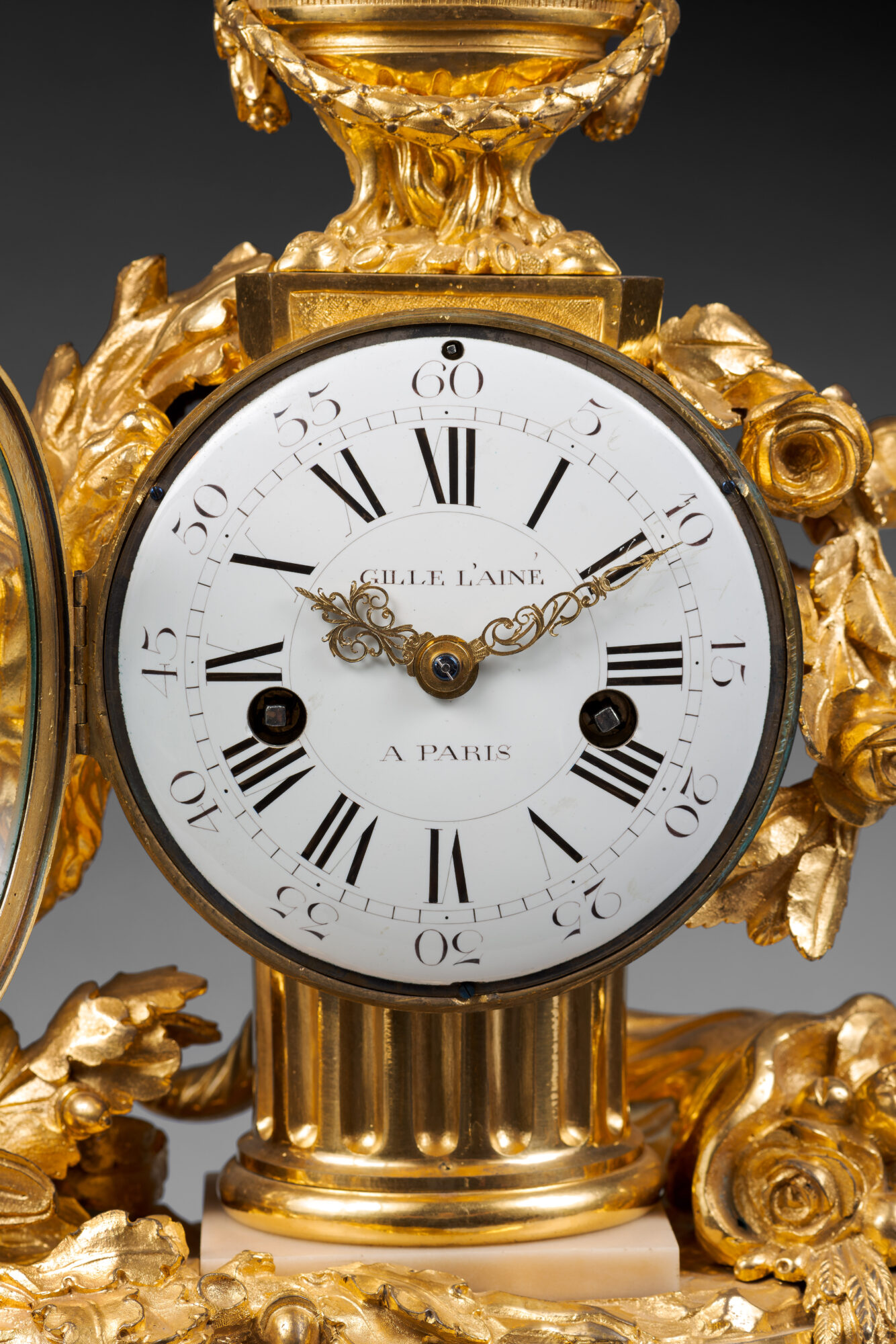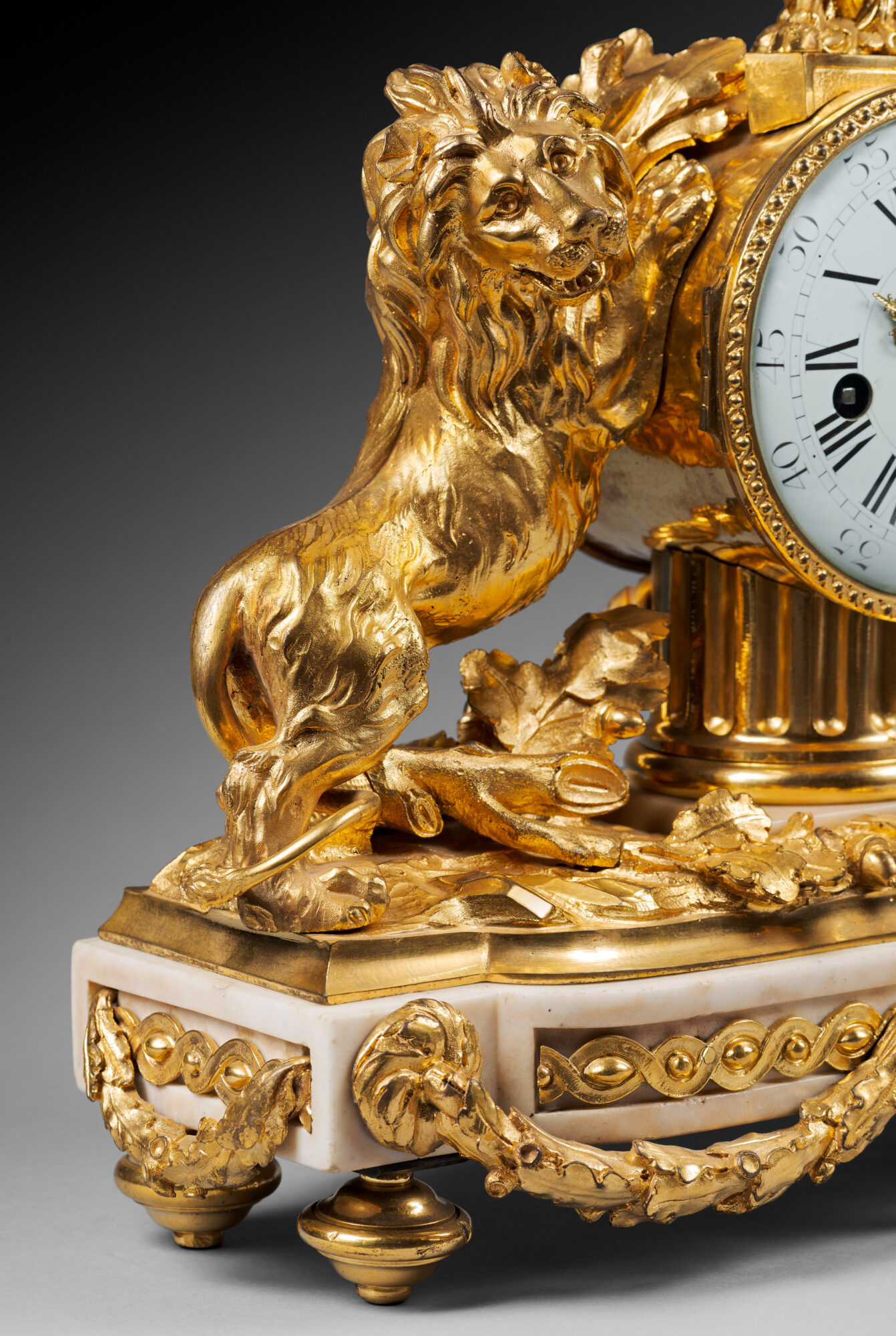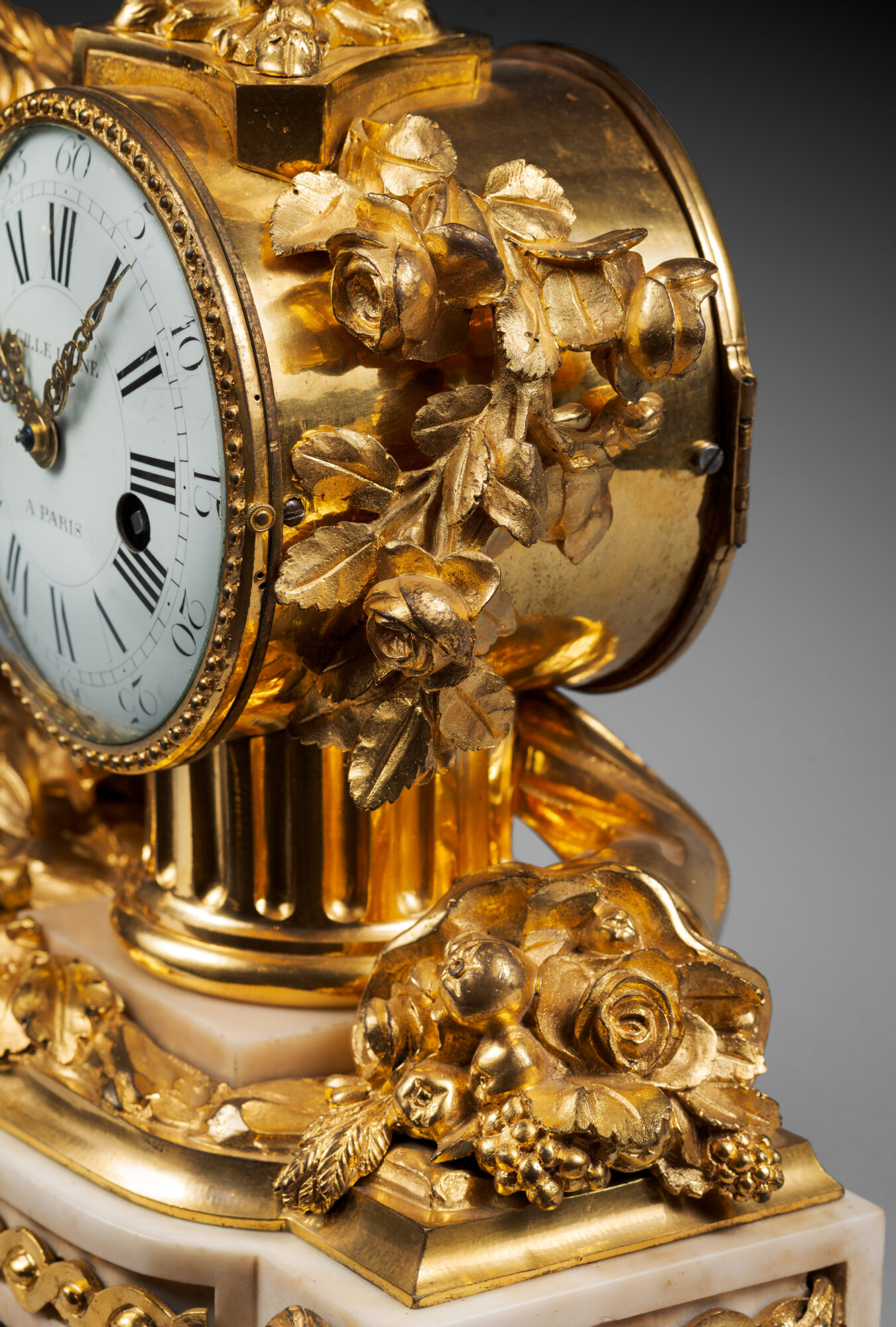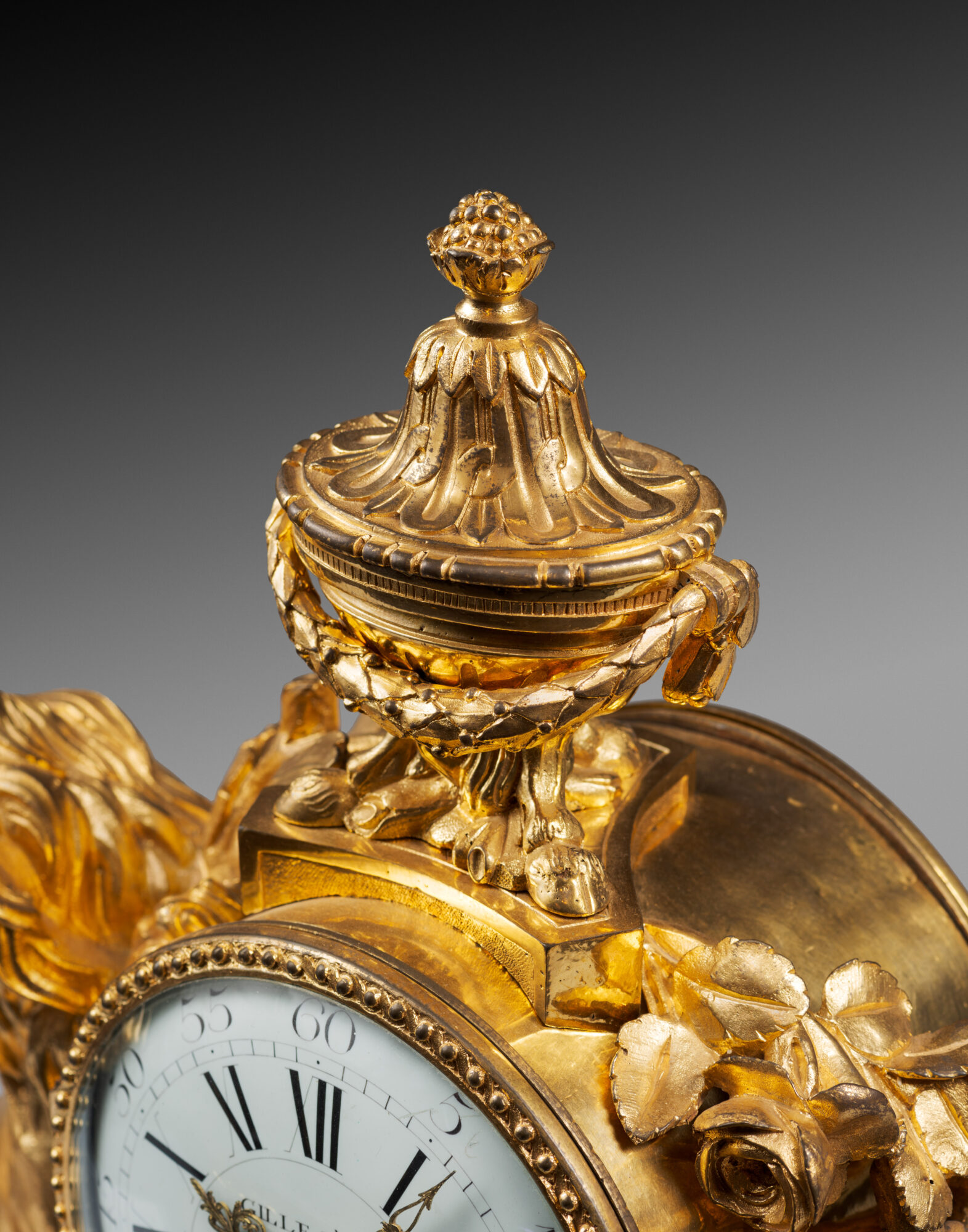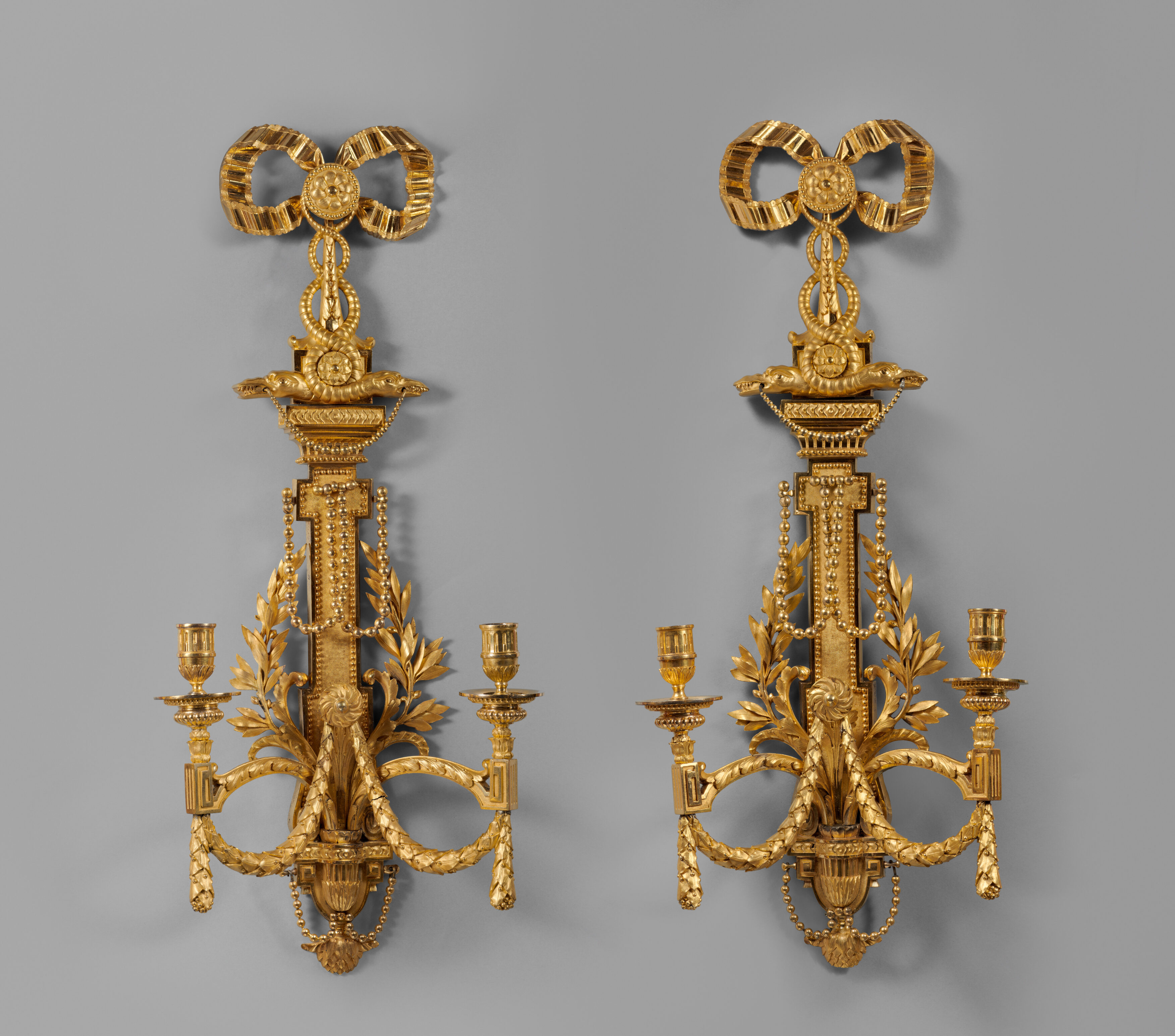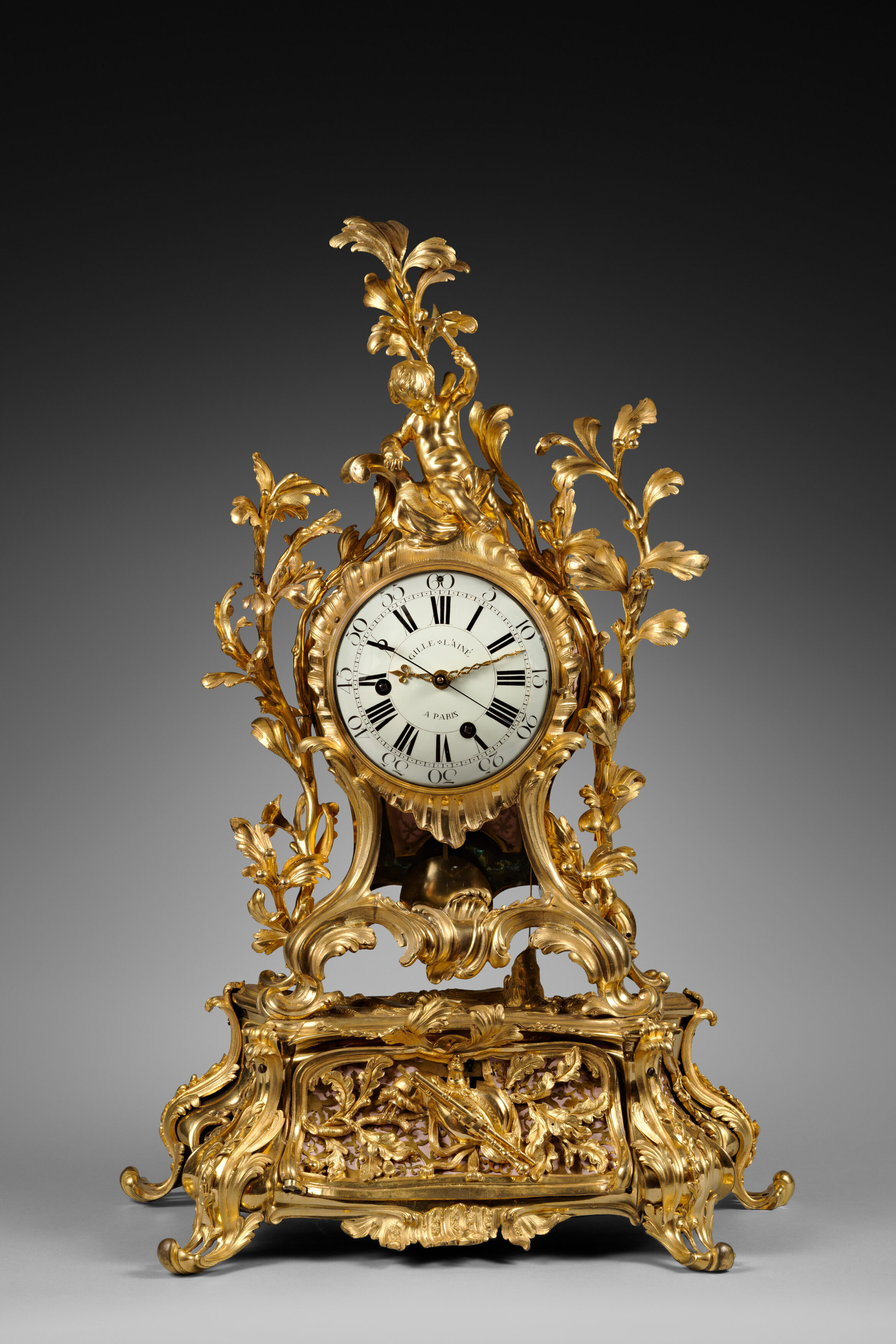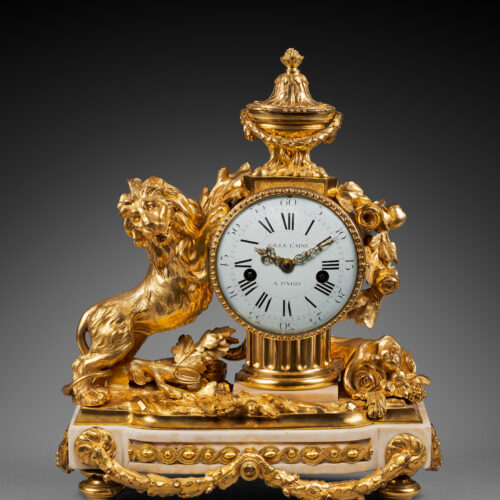Rare Matte Gilt Bronze and White Carrara Marble Mantel Clock
“The Rearing Lion”
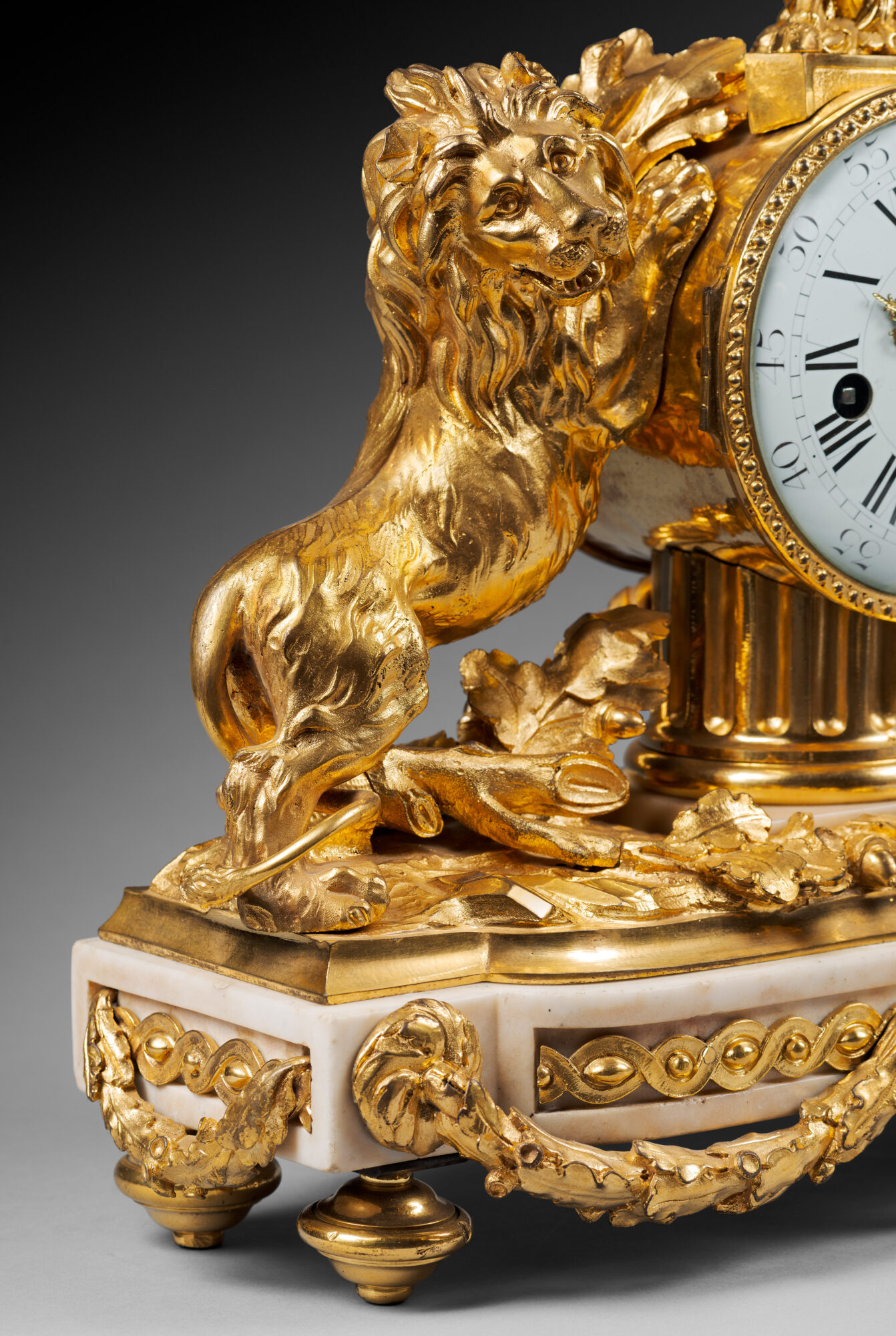
Dial signed “Gille l’Aîné à Paris” by the clockmaker Pierre II Gille
Probably sold by cabinetmaker Antoine Foullet
Paris, Transition period between Louis XV-Louis XVI, circa 1770
The round white enamel dial, signed “Gille L’Aîné à Paris”, indicates the Roman numeral hours and the Arabic numeral five-minute intervals by means of two pierced gilt bronze hands. The hour and half hour striking movement is housed in a neoclassical case featuring a very finely chased matte gilt bronze lion, on a base of white Carrara marble. The drum case housing the movement is surmounted by a lidded urn that is decorated with laurel leaf garlands; it has a seed finial. It rests on a truncated column that is adorned with fluting and molding. To the right there is a garland of blooming roses; to the left there is a magnificent lion rearing up on its hind legs. The lion stands on a naturalistic terrace strewn with oak branches and a cornucopia. The shaped quadrangular base has a slightly rounded façade decorated with spiraling rosettes with a garland of oak leaves suspended from a central roundel; it is decorated with a frieze of interlacing motifs centered with alternating ovals and spheres. The clock stands on four molded flattened toupie feet.
Discover our entire collection of antique mantel clocks for sale online or at the gallery.
La Pendulerie is the specialist in fine and rare antique clocks, based in Paris.
The present rare mantel clock was created in the late 1760s or early 1770s by a Parisian bronze caster whose identity is currently not known, for the cabinetmaker Antoine Foullet, who, due to the strict regulations of the artisans’ guilds of the period, could not create bronze pieces, but could nevertheless sell them and enjoy exclusive commercial rights to these pieces. Only a few examples of the model were made. Among them, one example, whose dial was signed “Bourdier”, was formerly offered by the Galerie Didier Aaron (illustrated in J-D. Augarde, Les ouvriers du Temps, La pendule à Paris de Louis XIV à Napoléon Ier, Editions Antiquorum, Genève, 1996, p. 284, fig. 216, and in H. Ottomeyer and P. Pröschel, Vergoldete Bronzen, Die Bronzearbeiten des Spätbarock und Klassizismus, Band I, Munich, 1986, p. 193, fig. 3.11.5). A second clock, whose dial was signed “Cronier”, is illustrated in P. Kjellberg, Encyclopédie de la pendule française du Moyen Age au XXe siècle, Les éditions de l’Amateur, Paris, 1997, p. 280, fig. A. One further clock of this type, whose dial is signed “Festeau le jeune”, was formerly in the collection of Viscountess Vigier (sold Paris, Palais Galliera, Maître Rheims, June 2-3, 1970, lot 80).
The signatures “Gille l’Aîné à Paris” and “Gille Fils à Paris” are those of two Parisian clockmakers, father and son. Until 1765, the signature “Gille L’Aîné” was used by Pierre I François Gille (1690-1765), while his son Pierre II Gille (1723-1784) signed his dials “Gille L’Aîné Fils”.
After becoming a master on 18 November 1746 as the son of a master, Pierre II Gille opened a workshop in the rue Saint-Martin, then the rue Saint-Denis and the rue aux Ours. At the beginning of his career he worked with his father, then he opened his own workshop in the mid-18th century and immediately encountered great success among influential collectors. On his father’s death in 1765, Pierre II Gille took over his signature, marking his pieces “Gille l’Aîné à Paris”.
During the 18th century, clocks bearing the signature “Gille L’aîné” were mentioned as belonging to the Marquis de Brunoy, the Prince Charles de Lorraine, the influential Farmer General Perrinet de Jars, the Duke de Gramont, the Prince de Condé and Augustus II of Saxony.
Antoine Foullet is a cabinetmaker specialising in clock and regulator cases ; he became a master on September 24, 1749.
